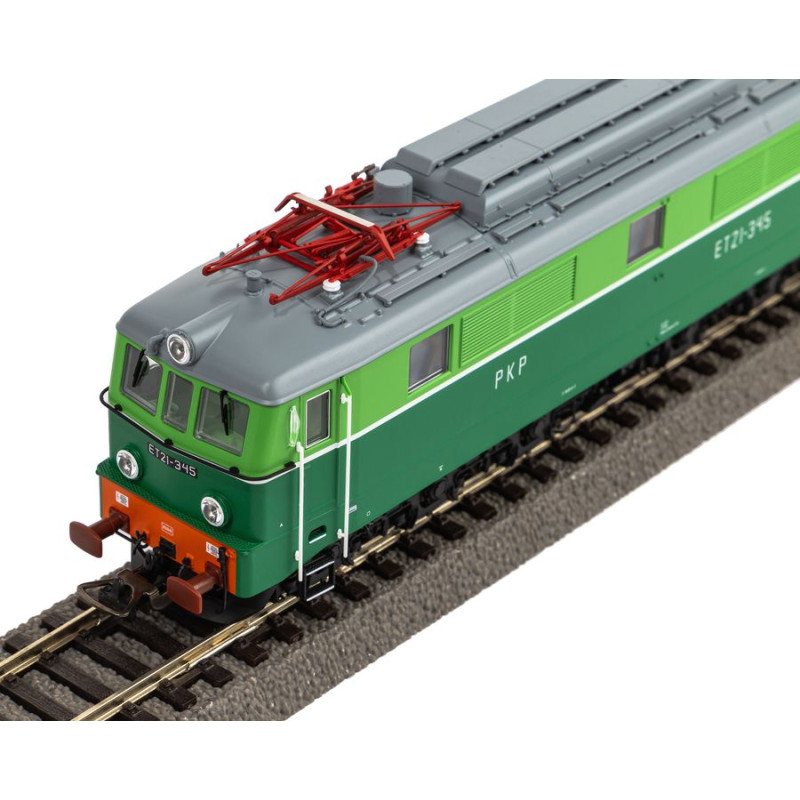In 1958, production of the first Polish freight electric locomotive began at the Pafawag plant in Wroclaw . Two prototypes and 18 series machines were subjected to thorough testing, resulting in design changes in another 70 units. By 1971, a total of 658 locomotives of this type had been delivered. Reaching a top speed of 100 km/h, the machines were designed to run a train of 2,400 tons at 70 km/h in level terrain . ET21-series locomotives could be found for a long time on virtually the entire electrified network in Poland. With the increasing number of ET22-series machines , ET21-series locomotives were gradually pushed out to the south of the country. Originally the ET21 series was to be withdrawn from service as early as 2002, but the locomotives served much longer, and can still be found todayin the colors of private carriers.
Want to know the history of this locomotive ? See HERE
New from Piko for 2024: PKP Cargo's print version of the ET21 in epoch VI. The PKP Cargo ET21 freight locomotive is one of the milestones of traction change in Poland. PIKO honors this historical value by realizing an H0 scale model. The result is a model that perfectly captures the character of the prototype. Typical attributes of PIKO Expert models can also be found on the ET21: finely engraved and extremely lively-looking fan grilles, precisely perforated bogie panels and extremely delicate roof equipment. These features are complemented by absolutely prototypical painting and equally accurate printing. The model is powered by a five-speed PIKO engine with two flywheel masses. Upgrading the vehicle's digital decoder or sound is very easy with the PluX22 interface and appropriate mounting space. Almost mandatory is the red and white lighting, which of course uses LED technology and changes with the direction of travel.
Model specifications:
- Manufacturer: PIKO
- Scale: 1/87 H0
- Product code: 51612
- Locomotive type: ET21-345
- Designation: PKP
- Epoch: VI
- Length: 193 mm
- Minimum turning radius: 358 mm
- Power system: direct current
- Digital interface: NEM 658 PluX22
- Lighting (internal): Driver's room lighting (with PluX22 decoder)
- Coupling: NEM shaft + short coupling link
- Sound: PIKOsound decoder #56589
- Age: 14+
For more information and photos, visit the manufacturer's website (link in the tab above).
A bit of history on the video:
ET21-157 PKP vs ET22-259 in miniature
And, when was the first PKP electric locomotive launched ?








